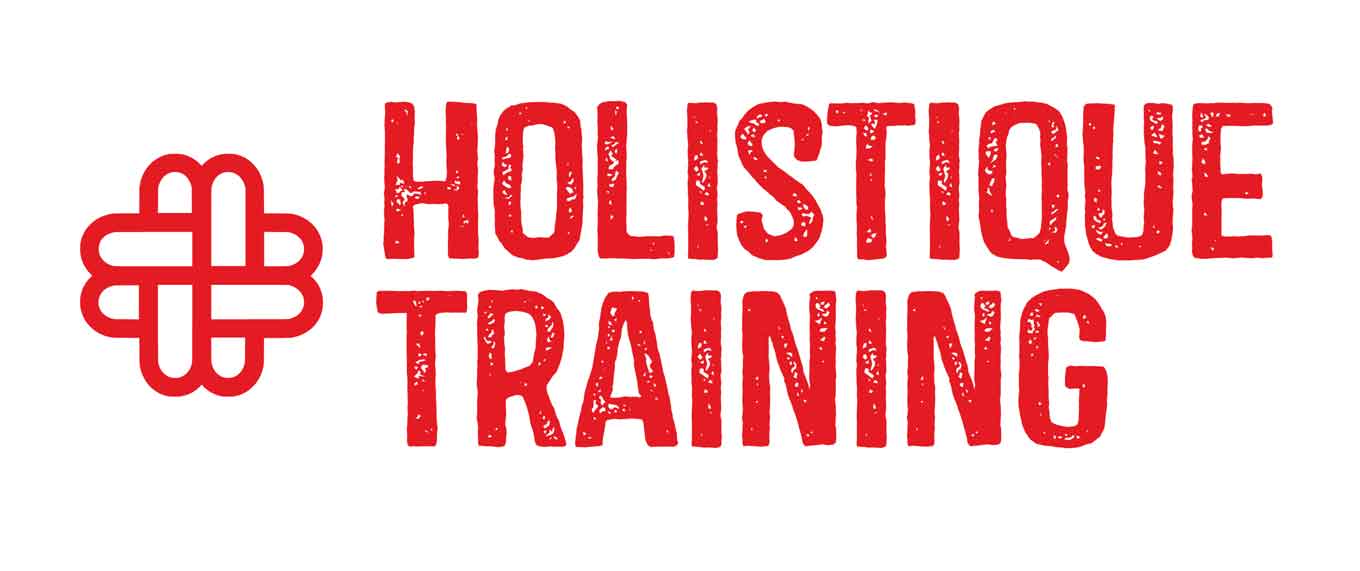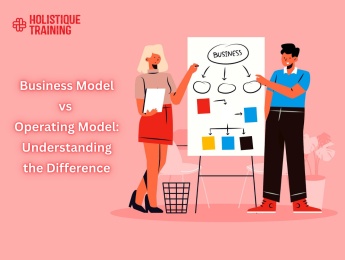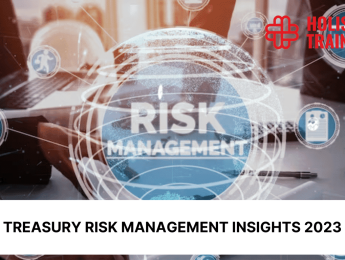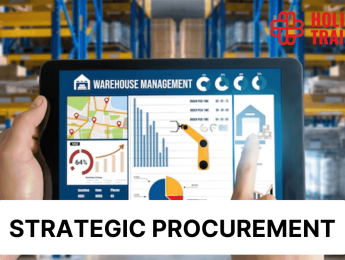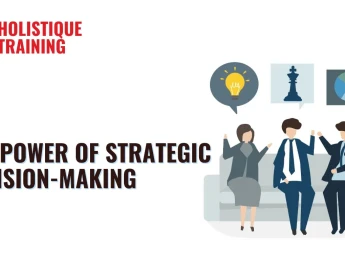- Table of Contents
- Introduction
- What is a Business Model?
- Elements of a Business Model
- 1. Value Proposition
- 2. Customer Segments
- 3. Channels
- 4. Customer Relationships
- 5. Revenue Streams
- 6. Key Resources
- 7. Key Activities
- 8. Key Partnerships
- 9. Cost Structure
- The Importance of a Business Model in Business Planning and Analysis
- 1. Strategic Clarity
- 2. Investor Appeal
- 3. Risk Mitigation
- 4. Scalability and Growth Opportunities
- 5. Performance Measurement
- How to Create a Business Model
- 1. Identify the Problem
- 2. Define Your Value Proposition
- 3. Understand Your Market
- 4. Map Out Revenue Streams
- 5. Outline Key Resources and Activities
- 6. Build Partnerships
- 7. Test and Refine
- What is an Operating Model?
- The Core Components of an Operating Model
- 1. Processes
- 2. Organization Structure
- 3. Technology and Systems
- 4. People and Skills
- 5. Governance and Decision-Making
- 6. Metrics and Performance Management
- How to Build Your Operating Model Design
- 1. Align with Business Strategy
- 2. Define Key Capabilities
- 3. Map Core Processes
- 4. Design the Organizational Structure
- 5. Leverage Technology and Tools
- 6. Establish Governance and Accountability
- 7. Develop Metrics and KPIs
- 8. Test and Refine the Model
- Difference Between Business and Operating Models
- The Importance of Alignment
- 1. Ensures Strategic Execution
- 2. Optimizes Resource Utilization
- 3. Enhances Customer Experience
- 4. Improves Organizational Agility
- 5. Drives Employee Engagement and Productivity
- 6. Mitigates Risks and Ensures Compliance
- Take the Next Step: Join Our Course
- Why Choose This Course?
- Conclusion
Introduction
Every successful business thrives on two critical frameworks: the business model and the operating model. These two concepts, though often used interchangeably, serve distinct purposes in shaping an organization’s strategy and execution. A business model outlines the "what" and "why" of a business—what value it delivers, who it serves, and how it generates revenue. On the other hand, the operating model focuses on the "how"—how the business functions internally to deliver that value effectively and efficiently.
In this blog post, we will explore the differences between these two frameworks, their individual components, and how they work together to drive organizational success. We will also discuss how to create a business model, build an operating model, and ensure alignment between the two. By the end, you’ll have a clearer understanding of how these models serve as the foundation for strategic planning and operational excellence.
What is a Business Model?
At its core, a business model is a blueprint for how a company creates, delivers, and captures value. It is the conceptual framework that explains the rationale of how an organization operates and sustains itself financially. A strong business model answers fundamental questions such as:
- Who are the customers?
- What value does the business provide?
- How does the business deliver that value?
- How does the business generate revenue and ensure profitability?
A business model is not just a document or a plan; it is the essence of a company’s strategy. It defines the unique value proposition that sets a company apart in the marketplace and determines how it competes within its industry.
Elements of a Business Model
A business model consists of several interrelated components that work together to create value for the organization and its customers. These components are often visualized through frameworks like the Business Model Canvas. Let’s break down the key elements:
1. Value Proposition
The value proposition is the heart of any business model. It defines the unique benefits a company offers to its customers and explains why they should choose its products or services over competitors. A strong value proposition solves a specific problem or fulfills a need in a way that resonates with the target audience.
For example, Tesla’s value proposition lies in providing high-performance electric vehicles that are environmentally friendly, technologically advanced, and luxurious. Similarly, companies like Netflix offer convenience and entertainment by providing on-demand streaming services with personalized recommendations.
To craft a compelling value proposition, businesses must understand their customers’ pain points and preferences. It’s not just about offering a product or service—it’s about delivering a solution that creates meaningful value.
2. Customer Segments
Customer segments refer to the specific groups of people or organizations a business aims to serve. These groups are defined by shared characteristics such as demographics, behavior, needs, or preferences.
For instance, a business like Airbnb serves two primary customer segments: travelers looking for unique, affordable lodging and property owners seeking to monetize their spaces. By understanding these distinct groups, Airbnb tailors its offerings to meet their needs effectively.
Businesses often divide their customer base into segments to better address the unique requirements of each group. This segmentation allows for targeted marketing, personalized experiences, and improved customer satisfaction.
3. Channels
Channels are the pathways through which a company delivers its value proposition to its customers. These can include physical stores, online platforms, mobile apps, partner distributors, or even direct sales teams.
For example, Apple uses a mix of channels, including its retail stores, e-commerce website, and authorized resellers, to reach its customers. The choice of channels depends on the preferences of the target audience and the nature of the product or service being offered.
Effective channels not only ensure that the value proposition reaches customers but also enhance the overall customer experience. Businesses must evaluate the efficiency, cost, and scalability of their channels to optimize delivery.
4. Customer Relationships
Customer relationships describe how a business interacts with its customers throughout their journey. These relationships can take various forms, such as self-service, personalized assistance, or community-building efforts.
For example, Amazon builds customer relationships through personalized recommendations, an easy-to-use platform, and responsive customer support. On the other hand, luxury brands like Louis Vuitton focus on creating exclusive, high-touch experiences for their clients.
The type of customer relationship a business chooses depends on its target audience and value proposition. Strong customer relationships foster loyalty, encourage repeat purchases, and drive word-of-mouth referrals.
5. Revenue Streams
Revenue streams are the sources of income for a business. They represent how a company monetizes its value proposition and generate profits. There are several types of revenue streams, including:
- Direct Sales: Selling products or services directly to customers (e.g., retail sales).
- Subscriptions: Charging customers a recurring fee for access to products or services (e.g., Spotify or Netflix).
- Licensing: Allowing others to use intellectual property for a fee (e.g., software licenses).
- Advertising: Earning revenue by displaying ads to an audience (e.g., Google or Facebook).
A business can have multiple revenue streams to diversify its income and reduce risk. For instance, Microsoft generates revenue from software sales, cloud services, and hardware products.
6. Key Resources
Key resources are the assets a business needs to deliver its value proposition, reach its customers, and operate effectively. These resources can be categorized into four main types:
- Physical Resources: Buildings, equipment, inventory, and logistics infrastructure (e.g., Amazon’s fulfillment centers).
- Intellectual Resources: Patents, brands, proprietary technology, and customer databases (e.g., Google’s search algorithms).
- Human Resources: Skilled employees, leadership teams, and specialized expertise (e.g., Tesla’s engineers and designers).
- Financial Resources: Capital, credit lines, and revenue streams that fund operations and growth.
The importance of each resource depends on the nature of the business. For example, a tech startup may rely heavily on intellectual and human resources, while a manufacturing company may prioritize physical and financial resources.
7. Key Activities
Key activities are the critical tasks and processes a business must perform to deliver its value proposition and achieve its goals. These activities vary depending on the industry and business model.
For example:
- A software company’s key activities might include product development, coding, and customer support.
- A logistics company like FedEx focuses on package handling, transportation, and delivery optimization.
Identifying and optimizing key activities is essential for maintaining efficiency and ensuring that the business operates smoothly.
8. Key Partnerships
Key partnerships are the external relationships and collaborations that help a business operate and grow. These partnerships can include suppliers, distributors, strategic alliances, or joint ventures.
For instance, Starbucks partners with coffee bean suppliers, equipment manufacturers, and real estate developers to ensure its operations run seamlessly. Partnerships can also involve co-branding efforts, such as Nike collaborating with athletes to promote its products.
Building strong partnerships allows businesses to access resources, reduce risks, and expand their reach. However, it’s important to choose partners whose goals and values align with the company’s mission.
9. Cost Structure
The cost structure outlines the expenses associated with operating the business. This includes fixed costs (e.g., rent, salaries) and variable costs (e.g., production, marketing).
For example, a subscription-based business like Netflix incurs costs for content licensing, technology infrastructure, and customer acquisition. Meanwhile, a manufacturing company like Toyota faces costs related to raw materials, labor, and logistics.
Understanding the cost structure is crucial for maintaining profitability. Businesses must identify areas where costs can be optimized without compromising quality or customer satisfaction.
Each of these elements is interconnected, and changes to one can impact the others. For example, altering the value proposition may require adjustments to customer relationships, channels, or cost structures.
The Importance of a Business Model in Business Planning and Analysis
A well-defined business model is critical for both business analysis and planning. It serves as a roadmap for decision-making, resource allocation, and long-term planning. Here are a few reasons why a business model is essential:
1. Strategic Clarity
A business model offers a clear understanding of the company’s goals, target market, and competitive advantage. By defining the value proposition and customer segments, businesses can align their strategies with market needs and opportunities. This clarity helps decision-makers focus on what truly matters, avoiding distractions and ensuring that resources are allocated effectively. For example, a company like Uber focuses on connecting riders and drivers through its platform, which guides its strategic decisions around technology, partnerships, and customer experience.
2. Investor Appeal
Investors and stakeholders rely on a business model to evaluate a company’s potential for growth and profitability. A strong business model demonstrates how a company plans to generate revenue, manage costs, and achieve scalability. It also highlights the unique value the business brings to the market, making it more attractive to potential investors. For instance, venture capitalists often invest in startups with innovative business models, such as Airbnb’s peer-to-peer lodging marketplace, because they see clear potential for disruption and financial returns.
3. Risk Mitigation
A business model helps identify potential risks and challenges that may arise during operations. By analyzing the components of the model—such as cost structure, revenue streams, and key activities—businesses can anticipate obstacles and develop strategies to mitigate them. For example, a subscription-based business might assess the risk of customer churn and implement retention strategies like loyalty programs or improved customer support. This proactive approach reduces uncertainty and increases the likelihood of success.
4. Scalability and Growth Opportunities
A robust business model highlights opportunities for scaling the business, whether through market expansion, product diversification, or leveraging technology. By understanding the key components of the model, businesses can identify areas where they can grow without compromising efficiency or quality. For example, Amazon’s business model initially focused on selling books online but later expanded to include a wide range of products, cloud services, and subscription offerings like Prime. This scalability was built into its original model, allowing the company to evolve over time.
5. Performance Measurement
A business model serves as a foundation for measuring the success of a company. Metrics such as customer acquisition cost (CAC), lifetime value (LTV), and profit margins can be directly tied to elements of the business model. These metrics provide valuable insights into the effectiveness of the company’s strategies and operations. For instance, a company like Netflix can analyze its subscription revenue streams and customer retention metrics to assess whether its value proposition and pricing strategy are working as intended. This data-driven approach enables continuous improvement and adaptation.
How to Create a Business Model
Developing a business model requires a combination of creativity, research, and strategic thinking. Here’s a step-by-step guide:
1. Identify the Problem
The first step in creating a business model is understanding the problem or need your business will address. This requires deep market research and customer insights to pinpoint pain points or gaps in the market. For example, when Uber was founded, it identified the inconvenience of traditional taxi services and the need for an on-demand, app-based transportation solution. By focusing on solving specific problems, businesses can ensure their offerings are relevant and valuable to their target audience.
2. Define Your Value Proposition
Once the problem is identified, the next step is to articulate how your product or service solves it. Your value proposition should clearly explain what makes your offering unique and why customers should choose it over competitors. For instance, Apple’s value proposition for the iPhone combines cutting-edge technology, sleek design, and a seamless user experience. A strong value proposition not only attracts customers but also sets the tone for your entire business model.
3. Understand Your Market
A thorough understanding of your target audience, competitors, and industry trends is essential for creating a successful business model. This involves segmenting your potential customers based on demographics, behaviors, and needs and analyzing competitors to identify your competitive advantage. For example, Netflix analyzed the entertainment industry and shifted its focus from DVD rentals to streaming, targeting a growing audience that values convenience and on-demand content. This market understanding allowed Netflix to position itself as a leader in the industry.
4. Map Out Revenue Streams
Determining how your business will generate revenue is a critical step in building a business model. Consider the different ways you can monetize your offerings, such as direct sales, subscription fees, licensing, or advertising. For example, Spotify uses a hybrid model with both subscription revenue from premium users and advertising revenue from free users. By diversifying revenue streams, businesses can reduce risk and create multiple paths to profitability.
5. Outline Key Resources and Activities
Identify the resources and activities that are essential to delivering your value proposition and running your business. These might include physical assets, intellectual property, skilled employees, or specific processes. For example, a manufacturing company like Toyota relies on its production facilities, supply chain, and engineering expertise to deliver high-quality vehicles. Mapping out these resources and activities ensures that your business has the infrastructure it needs to operate effectively.
6. Build Partnerships
No business operates in isolation, and partnerships can play a vital role in your success. Identify suppliers, distributors, or collaborators who can help you deliver your value proposition more efficiently or expand your reach. For instance, Starbucks partners with coffee bean suppliers and logistics companies to ensure a consistent supply chain. Strategic partnerships can also help businesses access new markets, reduce costs, or gain expertise in areas outside their core competencies.
7. Test and Refine
Creating a business model is not a one-time activity—it’s an iterative process. Once you’ve outlined your business model, test it by seeking feedback from customers, advisors, or industry experts. This might involve launching a minimum viable product (MVP) or conducting pilot programs to validate your assumptions. For example, many tech startups use beta testing to refine their products and business models before a full-scale launch. Be prepared to make adjustments based on real-world feedback to ensure your model is both viable and scalable.
What is an Operating Model?
While the business model defines what a company does, the operating model describes how it does it. An operating model is the operational framework that enables a business to deliver its value proposition effectively. It focuses on the internal processes, systems, and structures that support the execution of the business strategy.
An operating model answers questions such as:
- How are resources allocated?
- What processes and systems are in place to deliver value?
- How do teams collaborate and communicate?
- What governance structures ensure accountability and efficiency?
The Core Components of an Operating Model
An operating model typically includes the following components:
1. Processes
Processes are the workflows and activities that drive the day-to-day operations of a business. They define how tasks are performed, resources are utilized, and value is delivered to customers. Efficient processes are critical for reducing costs, improving productivity, and maintaining quality. For example, Amazon’s operating model includes streamlined fulfillment processes that enable rapid order processing and delivery. Businesses must continuously evaluate and optimize their processes to stay competitive and adapt to changing market demands.
2. Organization Structure
The organization structure outlines how teams, roles, and responsibilities are arranged within a company. It defines reporting lines, decision-making hierarchies, and collaboration mechanisms to ensure smooth operations. For instance, a company like Google uses a relatively flat organizational structure to foster innovation and agility, while traditional corporations may rely on hierarchical structures for clear accountability. The structure must align with the company’s strategy and culture to support its operating model effectively.
3. Technology and Systems
Technology is a cornerstone of modern operating models, enabling automation, data analysis, and connectivity across various functions. Systems such as enterprise resource planning (ERP), customer relationship management(CRM), and supply chain management tools are essential for efficient operations. For example, Tesla’s operating model leverages advanced manufacturing technologies and software systems to optimize production and ensure quality control. Businesses must invest in technology that supports their processes and enhances their ability to scale.
4. People and Skills
The workforce is a vital component of any operating model. It includes the employees, contractors, and partners who execute the business’s processes and drive its success. A company must ensure it has the right skills and expertise to meet its operational needs. For example, Apple’s operating model relies on a talented workforce of designers, engineers, and marketers to maintain its competitive edge. Training, development, and recruitment strategies should be aligned with the organization’s goals to build a capable and motivated team.
5. Governance and Decision-Making
Governance defines the frameworks and policies that guide decision-making and ensure accountability within the organization. It includes mechanisms for monitoring performance, managing risks, and adhering to regulatory requirements. For example, financial institutions like JPMorgan Chase have robust governance models to comply with industry regulations and mitigate risks. Effective governance ensures that the operating model is consistent, transparent, and aligned with the company’s strategic objectives.
6. Metrics and Performance Management
Metrics and performance management systems are used to measure the effectiveness of the operating model. Key performance indicators (KPIs) and other metrics help track progress, identify areas for improvement, and ensure alignment with strategic goals. For example, a logistics company like FedEx monitors metrics such as delivery time, customer satisfaction, and operational costs to optimize its processes. Regular performance reviews and data-driven insights are essential for maintaining operational excellence.
Table: Metrics used to measure the effectiveness of an operating model
Metric | Description |
Operational Efficiency | Measures resource utilization to minimize waste and maximize output. |
Customer Satisfaction | Assesses how well customer expectations are being met. |
Financial Performance | Tracks profitability, revenue growth, and cost management effectiveness. |
Employee Productivity | Evaluates workforce efficiency in achieving organizational goals. |
Agility and Adaptability | Gauges the organization's ability to respond to market changes quickly. |
How to Build Your Operating Model Design
Designing an effective operating model requires a deep understanding of your business strategy and goals. Follow these steps to create one:
1. Align with Business Strategy
The first step in building an operating model is ensuring it aligns with the company’s overarching strategy and objectives. The operating model must support the business’s vision, values, and goals, acting as a bridge between strategy and execution. For example, if a company’s strategy focuses on customer-centricity, the operating model must prioritize customer service processes, technologies, and roles. Defining this alignment ensures that every component of the model contributes to achieving strategic priorities.
2. Define Key Capabilities
Key capabilities are the critical functions or competencies required to deliver the value proposition and achieve strategic goals. These might include areas such as product development, supply chain management, marketing, or customer support. For instance, a company like Tesla identifies advanced manufacturing, battery technology, and design innovation as its core capabilities. By defining and prioritizing these capabilities, businesses can allocate resources effectively and focus on what drives competitive advantage.
3. Map Core Processes
Core processes are the workflows and activities that underpin the delivery of key capabilities. Mapping these processes involves identifying how tasks are performed, who is responsible, and what resources are required. For example, a retail business might map processes for inventory management, order fulfillment, and customer service. This step ensures that processes are efficient, consistent, and aligned with the company’s goals. It also helps identify bottlenecks or inefficiencies that need to be addressed.
4. Design the Organizational Structure
The organizational structure defines how teams, roles, and responsibilities are arranged to execute the operating model. This includes determining reporting lines, decision-making authority, and collaboration mechanisms. For example, a startup might adopt a flat structure to encourage innovation and speed, while a multinational corporation might use a matrix structure to balance global and local needs. The design should reflect the company’s culture, size, and strategic priorities, ensuring that it supports effective execution.
5. Leverage Technology and Tools
Technology plays a central role in modern operating model design, enabling automation, data-driven decision-making, and seamless communication. Businesses must identify the tools and systems that support their processes and capabilities. For example, an e-commerce company might implement an integrated platform for inventory management, customer relationship management (CRM), and analytics. The right technology enhances efficiency, scalability, and adaptability, making it a cornerstone of any operating model.
6. Establish Governance and Accountability
Governance defines the rules, policies, and frameworks that guide decision-making and ensure accountability. This includes setting up processes for monitoring performance, managing risks, and ensuring compliance with regulations. For instance, a financial services company might create governance structures to oversee risk management and regulatory adherence. Clear governance ensures that the operating model is consistent, transparent, and aligned with the organization’s strategic objectives.
7. Develop Metrics and KPIs
Metrics and key performance indicators (KPIs) are essential for measuring the success of the operating model. These metrics should align with the company’s strategic goals and provide insights into the performance of processes, teams, and technologies. For example, a logistics company might track metrics such as delivery times, customer satisfaction, and operational costs. By continuously monitoring these metrics, businesses can identify areas for improvement and ensure that the operating model remains effective.
8. Test and Refine the Model
Building an operating model is an iterative process that requires testing and refinement. This involves piloting the model in specific areas, gathering feedback, and making adjustments based on real-world insights. For instance, a company might test a new supply chain process in one region before rolling it out globally. Testing ensures that the model is practical, scalable, and aligned with the company’s goals. It also allows businesses to address any issues before full implementation.
Difference Between Business and Operating Models
The primary difference between a business model and an operating model lies in their focus.
- Business Model: Focuses on the "what" and "why." It outlines the value the business provides, its target audience, and how it generates revenue.
- Operating Model: Focuses on the "how." It describes the internal processes, resources, and systems required to deliver the business model effectively.
Think of the business model as the architectural blueprint of a house and the operating model as the construction plan. The former defines what the house will look like and its purpose, while the latter details how it will be built and maintained.
Aspect | Business Model | Operating Model |
Definition | Strategic blueprint for creating, delivering, and capturing value. | Practical framework for executing the business strategy. |
Focus | Customer-centric: Focuses on value proposition, customer needs, and revenue generation. | Internally focused: Details processes, resources, and organizational structure for delivery. |
Components | Value proposition, customer segments, revenue streams, and channels. | Processes, technology, people, governance, and performance metrics. |
Time Horizon | Long-term strategic vision for growth and market positioning. | Short- to medium-term focus on operational execution and efficiency. |
Purpose | Defines how the company creates and captures value to attract customers and stakeholders. | Ensures the business model is feasible, scalable, and executed effectively. |
The Importance of Alignment
Alignment between an organization’s strategy, business model, and operating model is critical for achieving long-term success. Without alignment, a company may face inefficiencies, wasted resources, and an inability to deliver on its value proposition effectively. Alignment ensures that every aspect of the organization works cohesively toward a common goal, enabling the company to operate efficiently, adapt to market changes, and maintain a competitive advantage.
Below are key reasons why alignment is essential:
1. Ensures Strategic Execution
Alignment bridges the gap between strategy and execution. A well-aligned operating model translates the company’s strategic goals into actionable processes, roles, and systems. For example, if a company’s strategy is to provide exceptional customer service, its operating model must prioritize customer-centric processes, technologies, and training. This alignment ensures that the strategy is not just a vision but a practical, achievable reality.
2. Optimizes Resource Utilization
When the business and operating models are aligned, resources such as time, money, and talent are allocated effectively to support strategic priorities. Misalignment can lead to wasted resources—for instance, investing in technology or processes that do not directly contribute to achieving the company’s goals. Alignment ensures that every resource is directed toward activities that deliver value and drive results.
3. Enhances Customer Experience
Alignment between the business model (what customers expect) and the operating model (how the company delivers value) is vital for meeting and exceeding customer expectations. For instance, if a company promises fast delivery as part of its value proposition, its operating model must include efficient logistics, inventory management, and customer support systems. Misalignment in this area can lead to dissatisfied customers and damage to the brand’s reputation.
4. Improves Organizational Agility
In today’s fast-changing business environment, organizations must be able to adapt quickly to new opportunities and challenges. Alignment creates a clear framework for decision-making, enabling the company to pivot effectively without disrupting operations. For example, if a company decides to enter a new market, alignment ensures that its operating model can be adjusted to support the new strategy seamlessly.
5. Drives Employee Engagement and Productivity
Alignment provides clarity for employees by linking their roles and responsibilities to the company’s strategic goals. When employees understand how their work contributes to the organization’s success, they are more engaged and motivated. Additionally, alignment reduces confusion and redundancies, improving collaboration and productivity across teams.
6. Mitigates Risks and Ensures Compliance
A misaligned organization is more likely to encounter operational risks, inefficiencies, and compliance issues. For example, if governance structures are not aligned with the company’s strategy, it may fail to meet regulatory requirements or manage risks effectively. Alignment ensures that the company operates within a clear framework, reducing the likelihood of costly errors or legal issues.
Alignment is not a one-time activity but an ongoing process. As the business environment evolves, companies must regularly review their strategy, business model, and operating model to ensure they remain aligned. This involves monitoring performance, gathering feedback, and making adjustments as needed. Continuous alignment enables organizations to stay competitive, deliver consistent value to customers, and achieve sustainable growth.
In summary, alignment is the foundation of operational excellence and strategic success. It ensures that every part of the organization works in harmony, enabling the company to execute its strategy effectively, adapt to change, and deliver on its promises to customers and stakeholders. Without alignment, even the best strategies and business models can fail to deliver the desired results.
Take the Next Step: Join Our Course
If you're ready to take your understanding of business models and operating models to the next level, we invite you to join our course, "Business Modelling and Cash Flow Maintenance." This comprehensive program is designed to equip you with the skills and knowledge to:
- Build a compelling and sustainable business model tailored to your market.
- Design an operating model that ensures operational efficiency and strategic execution.
- Master the art of cash flow management to maintain financial stability and support growth.
- Align your business and operating models for long-term success.
Whether you're an entrepreneur, manager, or business strategist, this course will empower you to make informed decisions, improve your organization's performance, and unlock its full potential.
Why Choose This Course?
- Practical Insights: Learn actionable strategies and tools that you can apply immediately.
- Expert Guidance: Benefit from industry experts with real-world experience in business design and financial management.
- Comprehensive Approach: Gain expertise in both business modeling and cash flow maintenance, ensuring a holistic understanding of business success.
- Flexible Learning: Access the course anytime, anywhere, at your own pace.
Take charge of your business's future today. Align your strategy, optimize your operations, and secure your financial health. Enroll now in "Business Modelling and Cash Flow Maintenance" and start building a stronger, more resilient business.
Conclusion
Understanding the distinction between a business model and an operating model is not just a theoretical exercise—it’s a practical necessity for organizations aiming to achieve long-term success. The business model defines the "what" and "why," outlining the value proposition, target audience, and revenue streams. Meanwhile, the operating model focuses on the "how," detailing the processes, resources, and systems required to bring the business model to life.
Together, these two frameworks form the backbone of strategic planning and operational excellence. A well-crafted business model enables organizations to identify their unique value, attract the right customers, and establish sustainable revenue streams. On the other hand, a thoughtfully designed operating model ensures that the internal workings of the company—its people, processes, and technology—are aligned to execute the strategy effectively.
However, the real key to success lies in achieving alignment between the business model and the operating model. When these two frameworks work in harmony, organizations can deliver consistent value to their customers, optimize their operations, and remain competitive in an ever-changing market. Misalignment, on the other hand, can lead to inefficiencies, wasted resources, and missed opportunities.
